To have a proof of the gastronomic renaissance that has been enlightening Colombia in the last decade, you need to go to Bogotá, as we were saying. To further confirm this, however, you should fly from the capital and land in Cartagena de Indias. One million inhabitants now, the Caribbean pearl of Colombia is what remains of half a millennia of slave trade, bloody battles, and raids. The tragic events of post-colonialism of which we are aware as never before.
Only a few fragments of all this drama can be perceived while walking the crowded alleys of the characteristic old town, in the shade of the imposing murallas overlooking the sea: splendid networks of roads and courtyards, wisely restored Italian and colonial palaces, the murales of the Gethsemane, loud music that resounds more or less everywhere after sunset.
But if tourists, local and international, are spending more and more time in Cartagena it is also because of the growing web of restaurants that make it an important culinary destination. Because of the cooks and entrepreneurs who finally give value to this country’s Caribbean biodiversity, a mezcla that revolutionises a unique tropical biodiversity with techniques expressed by the local, the African, Arab, Creole and Hispanic communities. The nth proof of the fertility of hybridization in the kitchen.
Celele
Calle del Espíritu Santo, Cra. 10c #29-200, +573017420389
The word Celele has 3 meanings: in the champeta language, the local music, it means “making love” or “a person of heart, intense”. But Celele is also a popular pork soup typical of the cartagenera tradition, even though perhaps not as much as mote de queso, the ubiquitous arroz de coco, hen sancocho or arepa with a heart of egg yolk. The most creative and famous restaurant (91st in the 50Best LatAm 2021) in town is the product of two fearless young men under 40. For two years Jaime Rodríguez Camacho from Boyacá and Sebastián Pinzón Giraldo from Bogotá have explored the Caribbean coasts and the inland of Colombia, opening this small, colourful and very crowded restaurant in 2018 on the edge of the Gethsemane neighbourhood.
Aside from the sensational appearance in the menu of ingredients we didn’t know about (it’s a constant looking up in the vocabulary to find out the alien meaning of words like guandù, boronìa, corozo…), we were struck by the pleasant repetition of the wafer (crispy or humid)/sauce format, the presence of sour and fruity notes that are hardly banal, and the creativity with which they use ingredients that to us seem almost unchangeable like bananas (platano), coconut, avocado or watermelon. They roast, powder, dehydrate and ferment them. Tricks that are the result of the cuisine of the last two decades. The obsessive attention to pairings comes instead from the latest decade. It stands out with ease, from the Caribbean craft beer to the Chilean Sauvignon Blanc, from the cocktail with lacto-fermented products to palm wine(!).
They pay lots of attention to historical and social themes: the Mama Africa cocktail comes with a QR code linked to a video titled “Me gritaron negra” on YouTube. Colombia abolished slavery in 1851, 15 years before the United States. But its very numerous indigenous and African communities were only acknowledged in the Constitution in 1991.
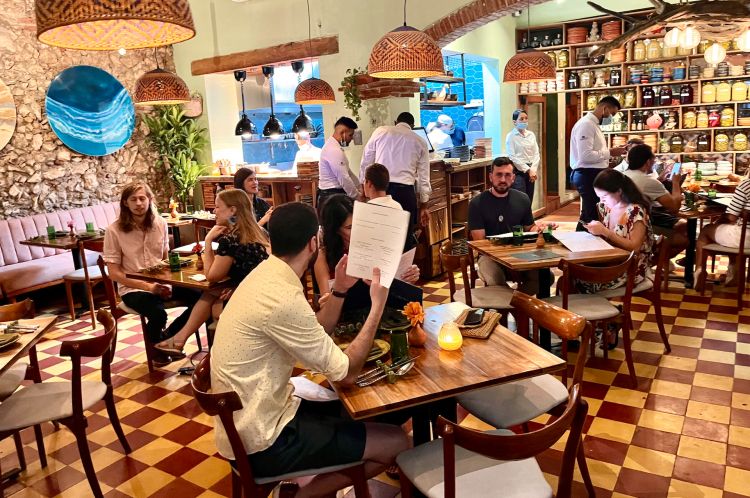
Celele. In the heart of the Gethsemane neighbourhood, it has two services, both at lunchtime and in the evening
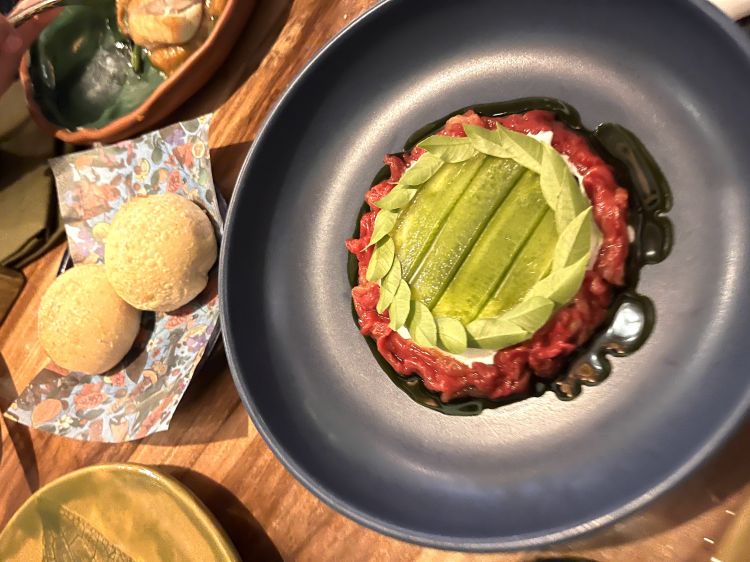
Celele. Burrata with buffalo milk from Planeta Rica, gazpacho of flower of Jamaica, roasted watermelon, sorrel, white cucumber, sorbet and oil of moringa (a sort of horseradish)
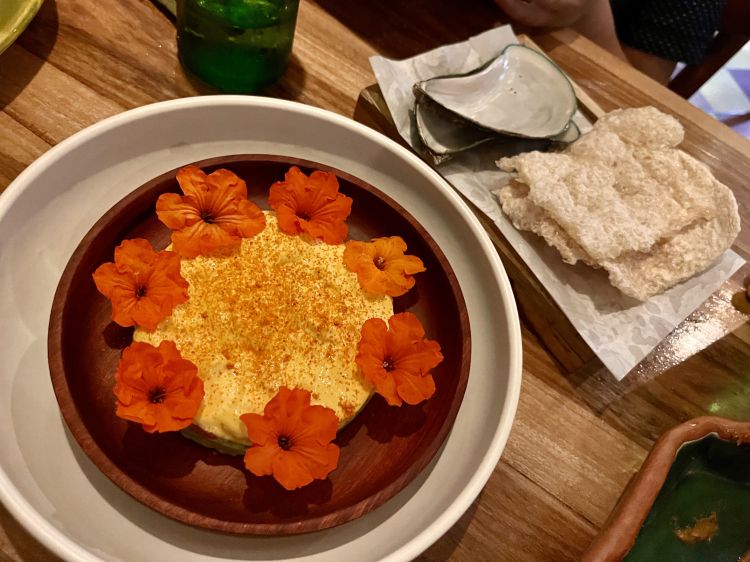
Celele. Escabeche costeño with molluscs with mashed avocado, oil of Mexican coriander, portulaca, preserved aji dulce chilli pepper, ivory palm vinegar, puffed pork skin
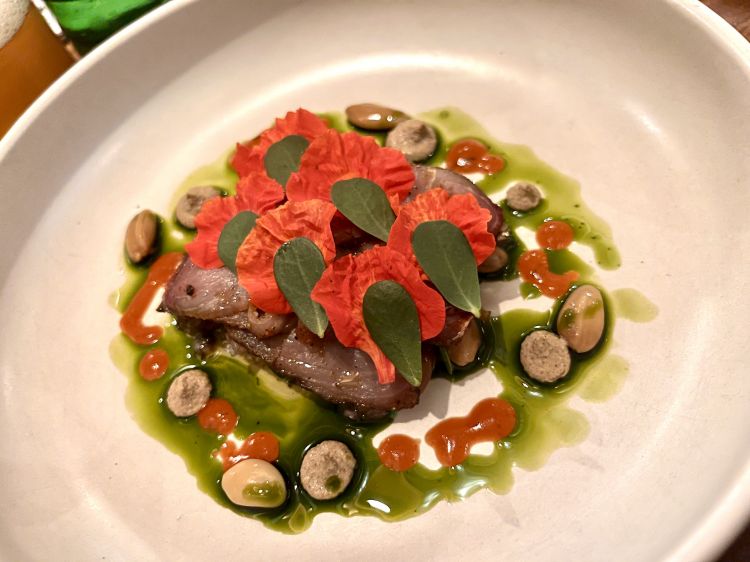
Celele. Home-smoked ham from Marlin, chimichurri of Creole herbs, seeds of orejero, cream of Creole sesame
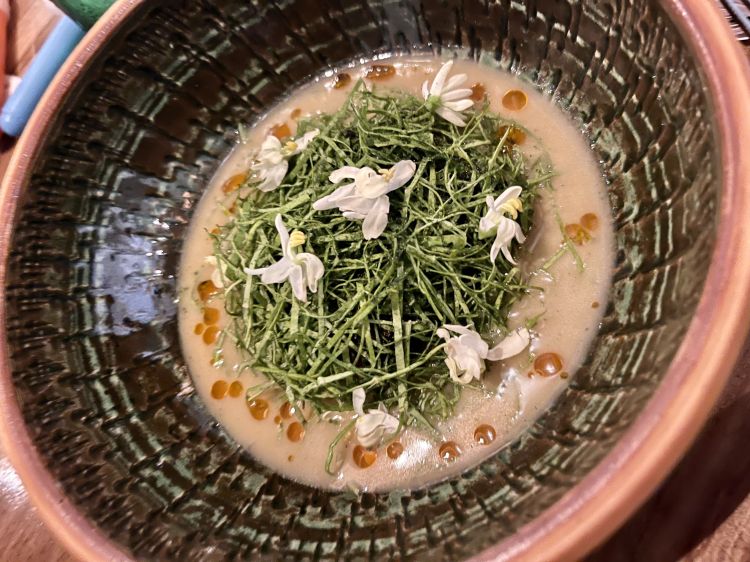
Celele. The soup after which the restaurant is named includes a terrine of pork confit, dehydrated banana purée, preserved sweet chilli pepper, kale, Caribbean beans, pork stock
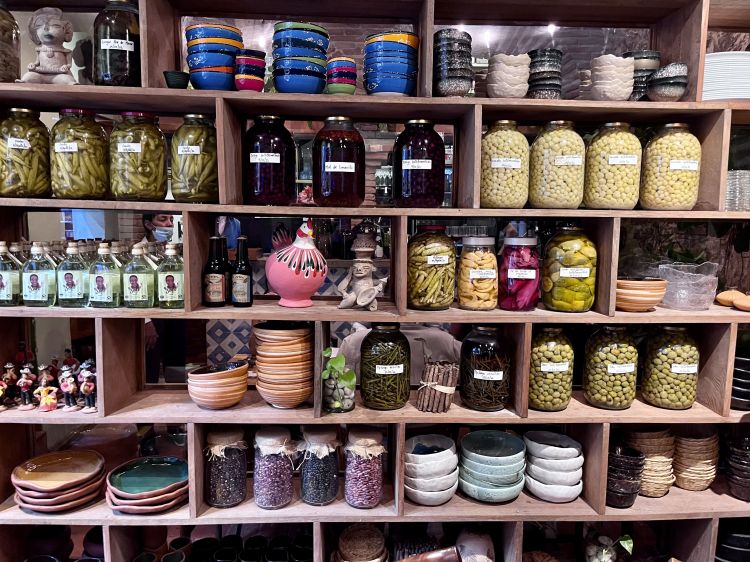
Celele. Lots of herb teas and lacto-fermented products. Their reference? Noma’s book on fermentation and the work of Sandor Katz
Also in the Gethsemane neighbourhood in Cartagena there’s a small jewel seating twenty crammed people, with a list of daily specials written in chalk on the blackboard. The late
Maria Yosefina Guerra, beloved sociologist crazy about Caribbean cuisine, opened it in 2009. The heritage of her research appears in the menu together with dishes like
Cabeza de gato,
platano maduro, yucca and
yam meatballs, and
Camarones en salsa da aguacate, a sort of sweet and sour ceviche with avocado,
carimañolas, fried cakes filled with minced meat. And then hens, fish in coconut sauce, almost everything in the form of soup. A very tasty cuisine of these tropics, with abundant onion and kindness. Book well ahead.
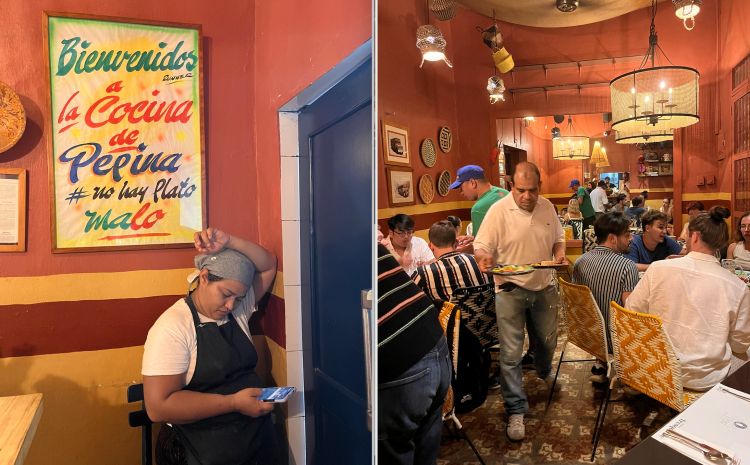
La Cocina de Pepina, well-made traditional cuisine, seating around twenty people
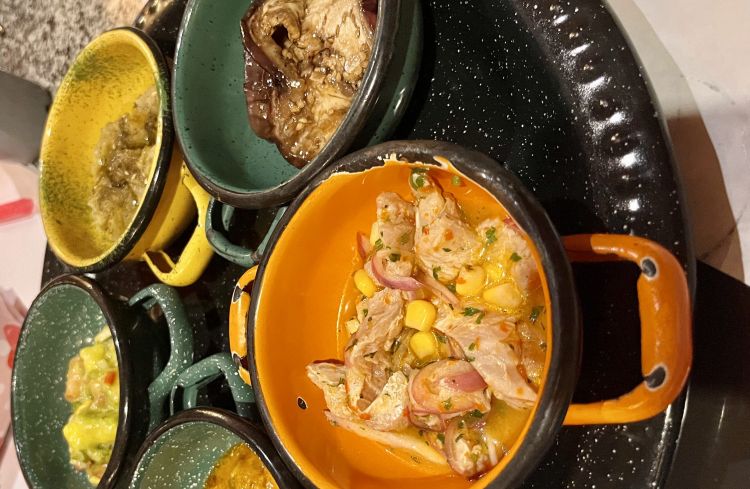
La Cocina de Pepina. The pinwheel of soups/stews at the beginning of the meal
The restaurant inside a beautiful courtyard divided into three areas, in the old town, is the spin-off of the famous restaurant bearing the same name in Medellin.
Carmen Angel and
Rob Pevitts are the authors of a contemporary cuisine made of 98% Colombian products (2%», says the excellent waiter
Mario Ramirez, «is made of caviar and foie gras…»). Fish and crustaceans dominate (crab, red porgy, scampi, a phenomenal ceviche in coconut sauce) but there’s also meat (duck and pork
chicharron, for strong stomachs), cooked with moderate creativity by
Felipe Trujillo.
In a country that doesn’t make wine from grapes (which you can still find at
Carmen’s), their strong attention to cocktails is striking. There’s a long list in the menu, even before food items. From the latter we recommend you order the marvellous local Lobster grilled with coconut embers with quinoa, yacòn (an apple from the Andes) and an emulsion of green dashi.
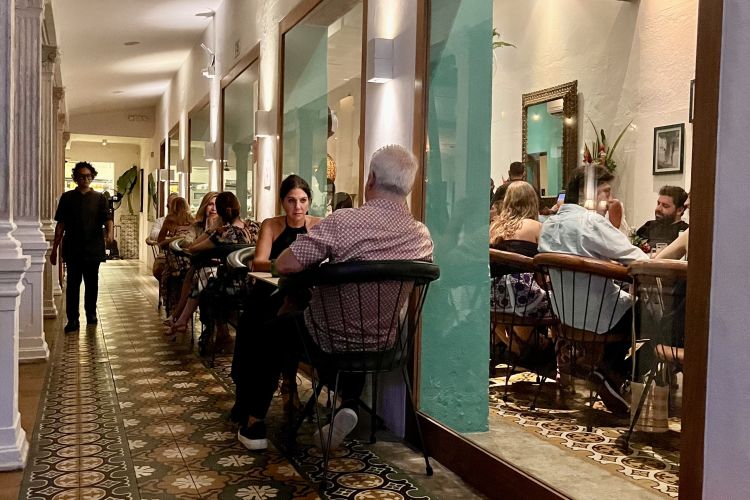
Carmen. The restaurant in Medellin with a branch in Cartagena, offers an elegant 98% Colombian cuisine (2% is made of foie gras and caviar)
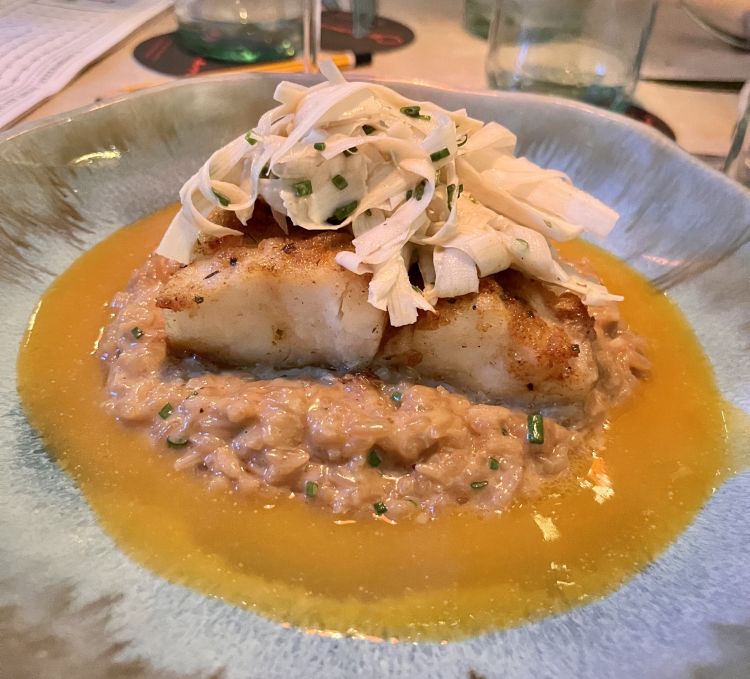
Carmen. Grilled robalo, risotto with arroz de coco, fresh palmito from Putumayo and sweet and sour chontaduro, palm from Quibdó, Colombia
In the very central Plaza Santo Domingo, we arrive almost by chance at the nth beautiful renovated courtyard in Cartagena de Indias and we find a place with three restaurants on the ground floor and another multitude of establishments, including a disco with vintage décor on the floor above. This is the result of an idea of
Emilia Castellanos, the entrepreneur behind
White Patio (motto: «breakfast all day long», try the
Mote de Queso with grilled aubergines),
Osteria Alta (ceviche and pizza) and
Ocassus (specialties baked in the wood oven). You’ll have reason to stay from dawn till the middle of the night.
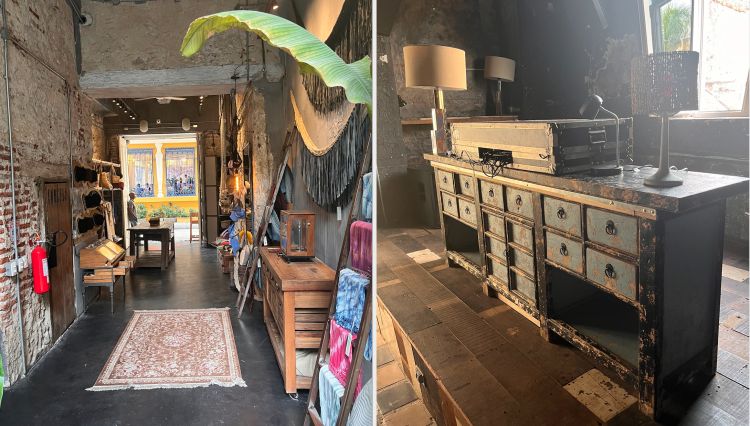
Casa Cruxada. At the entrance of the courtyard, it looks like a boutique (to the left). Inside, there are 3 restaurants and a nightclub/cocktail bar (in the photo to the right, the deejay’s console)
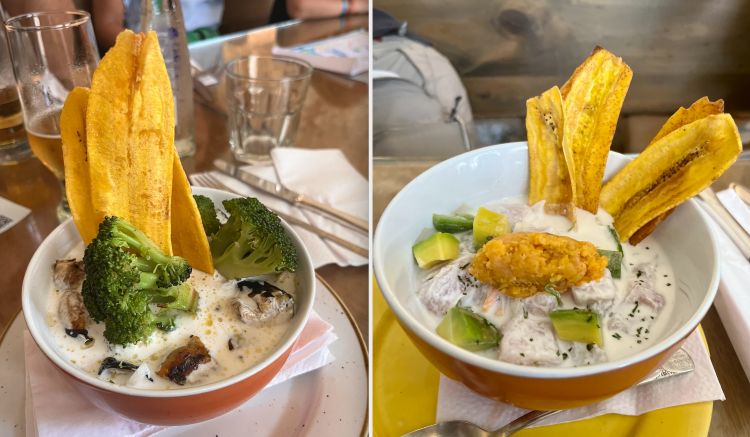
Casa Cruxada. Mote de queso soup with grilled aubergines and ceviche. The ubiquitous chips of platano maduro
The most institutional establishment in Cartagena moved a few months ago to Torre del Reloj, the entrance to the very touristic old town, recognisable by the street food fumes under which they cook non-stop pork sausages, corn arepa and
cocada, cakes of grated coconut with dulce de leche or other many variations.
The posh people of Cartagena (don’t bring your children after 7 pm, they’re banned) go to
Donjuán to taste seafood dishes made in a rigorous and technically uncomplex way. The mixed Ceviche of
robalo (a sort of Caribbean seabass) and prawns, coconut milk, coriander and corn is fabulous.
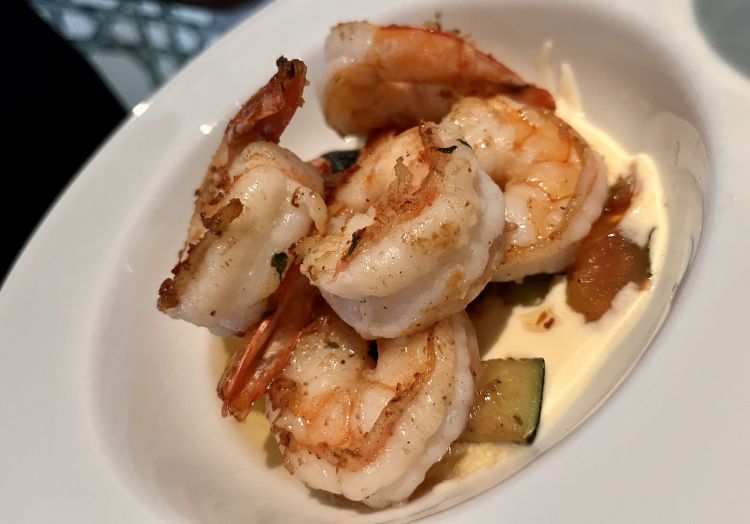
Donjuán. Fried prawns with cream of lemon on vegetables and arroz de coco (the popular coconut rice)
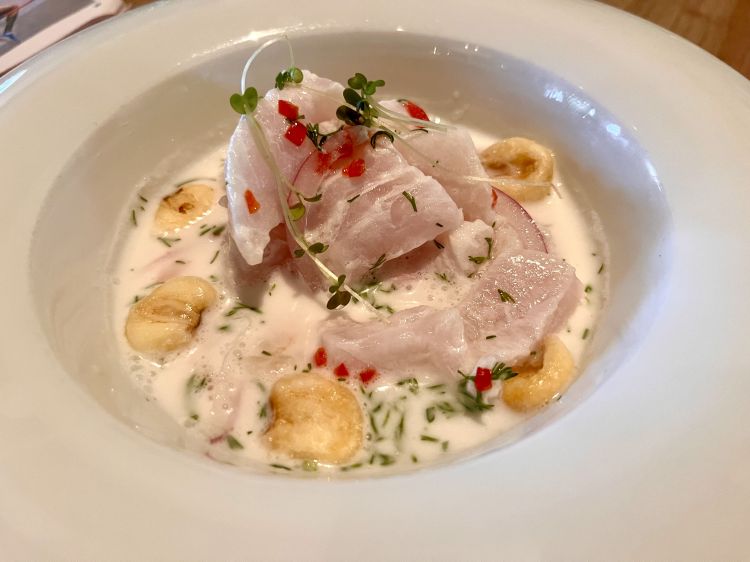
Donjuán. Ceviche of robalo and prawns, coconut milk, coriander and corn
,
+573165331932
We left the most popular place in Cartagena de Indias (53
rd in the
World’s 50Best Bars) for last, given its category: it’s a cocktail bar/club spread over 3 floors, in the heart of the old town.
Alquimico was born from the creative talent of
Jean Trinh, French-Vietnamese who moved to Colombia around ten years ago.
Each floor offers a different idea of cocktail: on the ground floor, signature cocktails only made with Colombian ingredients, seating a few people around the central bar; on the +1 there are classics with a twist (try the
Selva Martini: vermouth, gin and Amazonian herbs), on +2 there’s the open air terrace with tiki style cocktails. Around sixty people – of whom 16 are barmen – try to satisfy the needs of 6/800 guests each day of the year, until 2 in the morning. An
LGBT friendly place, it attracts all the young people of
Cartagena and beyond. You’ll have fun for sure.

Alquimico. Cocktail bar with only autochthonous ingredients and club/disco spread over 3 floors